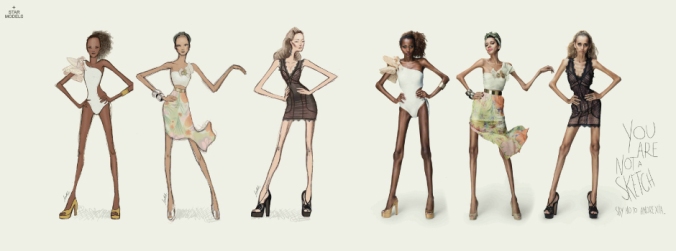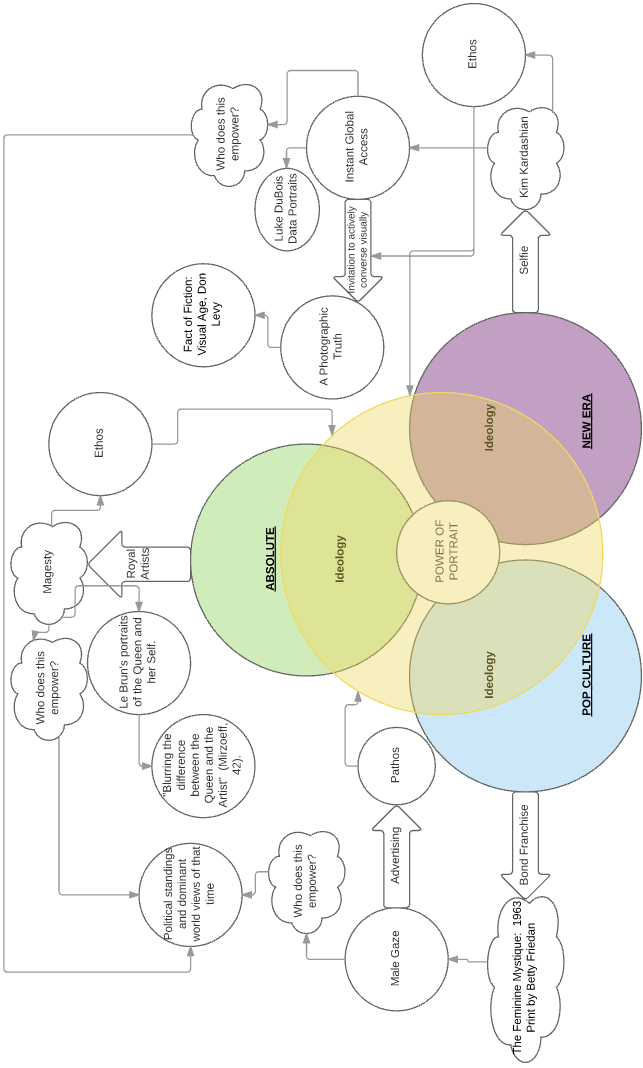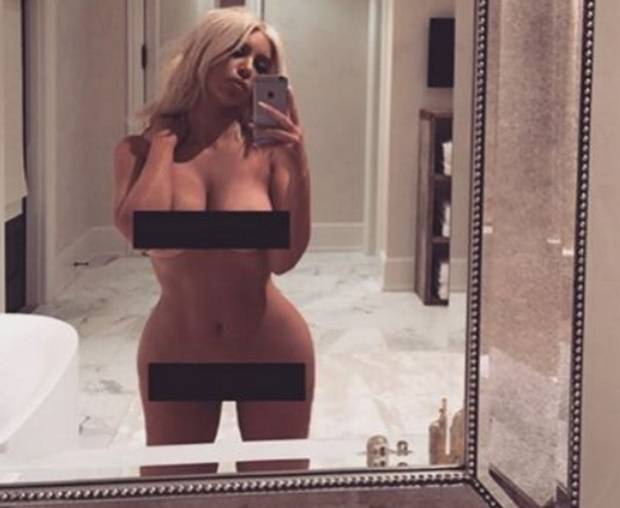
Barbara Kruger. I shop Therefor I Am. 1987. Digital.
This is a powerful image that highlights consumerism. It makes me as a viewer holistically aware of the idea that the worth of my possessions equates to the worth of myself.

Star Models. You Are Not A Sketch. 2013. Multi-Media.
This image is striking. It blatantly addresses the fact that fashion illustration is unrealistic. There are people in this world that maintain the opinion that ‘garments just look better on thinner models.’ This opinion disgusts me. It encourages an unhealthy standard to be set that can destroy the mind alongside the body.

Matthew Rolston. Barbie VS Reality. 2011. Photography.
This image I loved because I have heard it said that Barbie is an instigator in youth body image issues. The surgical markings that this woman has drawn over her entire form indicate the alterations she would need to look like the small doll. What gets me is she is considered a plus-sized model!

Dressmann. Underwear for Perfect Men. 2015. Photography.
This one I think is so important: men ALSO have body image issues. And this body-positive campaign is so inspiring. It not just illustrates the issue; it then presents a positive message to the audience.

Carol Rossetti. Women in English. 2014. Pencil on Paper.
This one is my absolute favourite. Rossetti is a phenomenal artist who empowers woman by debunking ideas imposed upon us. She has a whole series of cards illustrating evils women face every single day. These cards are personalised to a specific character. Their dispute is identified, and then an incredibly powerful moral firmly stated that feels as if it soothes any hurt caused by the issue.
There is a lot of self-image issues, for both me and women. I am sick of being old that ‘you have to look this way or else you are ugly.’ You could be perfectly healthy and not be skinny enough to fit the description. Anorexia is almost encouraged by the declining sizes. Once you get into that size zero, people shame you for fitting idealised proportions. People fat shame, saying that bigger people are lazy and have no respect for themselves. Healthy is not an aspired size: it is genuine health. It is entirely possible they are that size because they have compromised their physicality for their mental health. But the thing is that no matter what size you are you should be able to wear what you want to, or wear something that makes you feel attractive. A good designer can make anyone feel good.
Photos Sourced: The Art History Archive. Feminist Art. (Viewed on 25 May 2016). Web.
UK Sport Nutrition Store. Beauty. (Viewed on 25 May 2016). Web.
Rivers Research. Social Responsibility in Fashion Illustration. (Viewed on 25 May 2016). Web.
Bustle. 11 Body Positive Photoshoots That Did It Right. (Viewed on 25 May 2016). Web.
Facebook. Carol Rossetti. (Viewed on 25 May 2016). Web.


